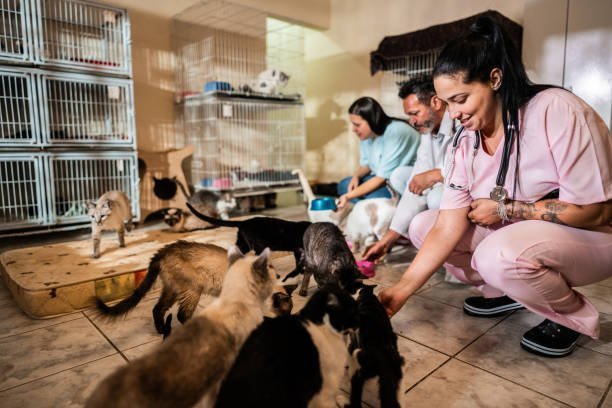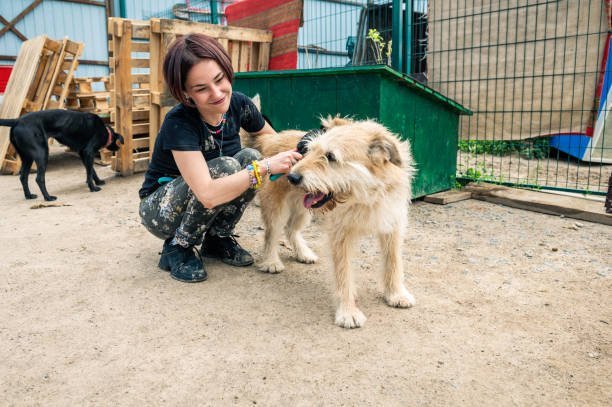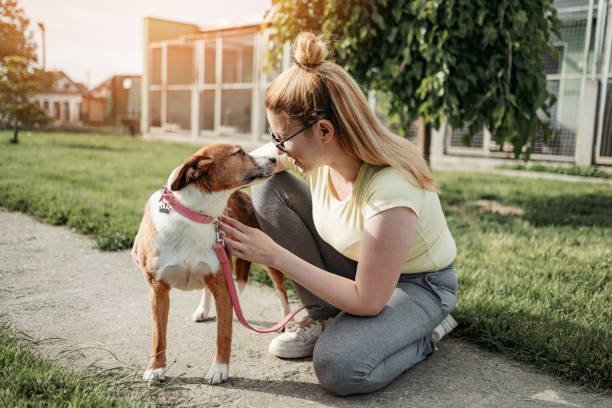Can adopting a rescued animal help reduce pet overpopulation?

Introduction:
In this article, we delve into a pressing question at the heart of the animal welfare discourse. The issue of pet overpopulation is a complex and pervasive concern, leading to overcrowded shelters and countless animals without homes. As we explore this topic, we’ll examine the profound impact that adopting rescued animals can have on mitigating this crisis.
Adopting rescue animals not only provides these animals with loving homes but also contributes to reducing the demand for breeding and the proliferation of stray and abandoned pets. By addressing the root causes of pet overpopulation through adoption, we aim to shed light on the critical role that compassionate individuals play in shaping a more sustainable and humane future for our animal companions.
Shelter Animal Overpopulation Crisis:
The shelter animal overpopulation crisis refers to the overwhelming number of dogs, cats, and other animals that enter animal shelters and rescues each year, far exceeding the available resources and capacity to care for them. This crisis is a result of various factors, including irresponsible breeding, pet abandonment, and failure to spay/neuter animals. Overpopulation leads to overcrowded shelters, limited resources, and, tragically, the euthanasia of healthy, adoptable animals due to lack of space.
The shelter animal overpopulation crisis is a growing concern in many regions, where animal shelters and rescue organizations are inundated with more pets than they can accommodate. This crisis stems from a combination of factors, including irresponsible breeding, accidental litters, and pets being surrendered due to various reasons, such as changes in the owner’s circumstances. As a result, overcrowded shelters often face limited resources, higher euthanasia rates, and inadequate care for animals in need.
The Impact of Adoption on Pet Overpopulation:
Adopting rescued animals plays a pivotal role in addressing pet overpopulation. When individuals choose to adopt from shelters or rescues, they provide loving homes to animals that might otherwise face euthanasia due to overcrowding. This reduces the strain on shelter resources and opens up space for other animals in need.
Moreover, adoption discourages the demand for animals from commercial breeders and puppy mills, which contributes to overpopulation. When more people choose adoption, it sends a message that there is a viable and ethical alternative to buying pets from breeders. Over time, this shift in preference can lead to decreased demand for commercially bred animals, ultimately helping to curtail overpopulation.
Spaying and Neutering Initiatives:
Spaying and neutering are essential components of reducing pet overpopulation. Many animal shelters and rescue organizations prioritize spaying and neutering animals before adoption to prevent future breeding. This proactive approach helps break the cycle of overpopulation by ensuring that adopted animals do not contribute to the problem.
Additionally, numerous spay/neuter initiatives and programs exist to provide affordable or even free sterilization services to pet owners in communities. These programs aim to reduce the number of unaltered animals in the population, preventing unwanted litters and helping control overpopulation at its source. Spaying and neutering are vital tools in the ongoing effort to reduce the number of homeless animals and ease the burden on shelters and rescues.
Responsible Ownership and Adoption Advocacy:
Responsible ownership and adoption advocacy are integral in the efforts to reduce pet overpopulation. Advocates and organizations play a crucial role in educating the public about responsible pet ownership, which includes spaying and neutering, regular veterinary care, and providing a loving and safe environment for pets. These advocates emphasize that adopting a rescued animal is an ethical choice that aligns with responsible pet ownership principles.
Adoption advocacy efforts go beyond individual adoptions. They work to dispel common misconceptions about rescued animals, such as the belief that they are all problematic or unhealthy. Advocates highlight the diversity of animals available for adoption, showcasing well-behaved, healthy, and loving pets in need of homes. By promoting the benefits of adoption and responsible ownership, these initiatives encourage more individuals to choose adoption as their preferred method of acquiring pets, thereby reducing the demand for commercially bred animals and mitigating the pet overpopulation crisis.
Adoption as a Sustainable Solution:
Adoption represents a sustainable solution to the pet overpopulation problem. When people adopt animals from shelters and rescue organizations, they provide homes for animals that might otherwise end up on the streets or in overcrowded shelters. This reduces the strain on shelters, enabling them to allocate their resources more effectively to care for animals in need. Additionally, adopting a rescued animal means giving a second chance to an animal that may have been abandoned or neglected, contributing to their well-being and happiness.
Moreover, the choice to adopt often includes the adoption fee, which helps support the rescue organization’s operations, including spaying and neutering, medical care, and sheltering costs. This financial contribution aids in the organization’s ability to continue rescuing animals and promoting responsible pet ownership. Adoption, therefore, creates a cycle of positive impact, benefiting animals, individuals, and the entire community.
Addressing Challenges and Misconceptions:
Addressing challenges and misconceptions is a critical aspect of reducing pet overpopulation through adoption. One common misconception is that all rescue animals have behavioral or health issues. In reality, many rescued animals are loving, well-adjusted pets that simply find themselves in unfortunate circumstances. Educating the public about the diverse range of animals available for adoption helps dispel this misconception and encourages more people to consider adopting.
Challenges such as breed-specific legislation, housing restrictions, and transportation barriers can hinder adoption efforts. Advocates and organizations work to address these challenges by advocating for fair legislation, providing resources to potential adopters, and offering transportation options to connect people with the right pets. Overcoming these hurdles is essential to making adoption a more accessible and appealing choice for individuals seeking pets, ultimately contributing to the reduction of pet overpopulation and the promotion of responsible pet ownership.
Conclusion:
I hope that this exploration of adopting rescued animals and its role in reducing pet overpopulation has provided clarity on the significance of this compassionate choice. Throughout this article, we’ve delved into the complexities of the shelter animal overpopulation crisis, the profound impact of adoption, the importance of spaying and neutering initiatives, responsible ownership, and the advocacy that drives these efforts.
Adopting a rescued animal represents a powerful and sustainable solution to the pet overpopulation problem. It not only offers loving homes to animals in need but also supports responsible ownership principles and the work of rescue organizations. By choosing adoption, individuals actively contribute to the alleviation of overcrowded shelters and the reduction of demand for commercially bred pets. It is our collective responsibility to advocate for the adoption of rescued animals, dispel misconceptions, and promote responsible pet ownership. Together, we can make a significant difference in the lives of countless animals and work toward a more humane and balanced future for pets and their human companions.










Post Comment